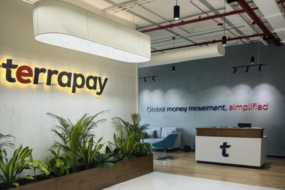
Every month we review hundreds of startups and are tasked with filtering down to about a dozen companies that we then spend more time with before selecting a handful to conduct robust due diligence on. Our analysis of companies ultimately comes down to one key question, can it deliver a favorable return on a fund level?
At Oui Capital, where I am fortunate to lead the investment team, we are decidedly data-driven, an approach we believe leads to better decision-making, especially in Africa, where information asymmetry is incredibly high. In an effort to help founders make smarter decisions when it comes time to raise venture capital financing, I pull back the curtain to discuss venture capital (VC) economics in the African context.
Before I jump into it, a few words about the VC/ founder dynamic:
VCs and founders have a special, symbiotic relationship. Your success is our success and vice versa, as it serves to validate our startup ecosystem globally — great venture-backed startup outcomes means more capital for VCs and, thus more capital for the next generation of founders.
Now, let’s begin.
No guts, no glory!
Startups are hard; it’s estimated that between 70 and 80 percent of them fail to deliver a positive return for their investors. But yet, investors back them. Why? Apart from it being good to fuel innovation and support entrepreneurship more broadly; when startups work, they reaaaaallyyyyyyy work, generally delivering on higher growth and gross margins than incumbents as a result of their technology advantage. This allows such companies to sell for large sums of money (See: Adyen, $2.3Bn pre-money valuation at Series C in 2015, current market capitalization of €41.7Bn).
In summary, startups either really work, or they don’t. Ergo, investing in startups is a binary exercise — you either do well enough to return your fund, or you don’t. With this in mind, every investment has to have the potential to return the fund, giving rise to the power law concept, which says that a small number of investments will drive the overwhelming majority of returns in a given VC fund.
With a shallow pool of local capital that is occasionally present at Series A, and often missing-in-action at Series B and beyond, I hypothesize that power law distributions in Africa are much more skewed than they are in the U.S. In the event that you do not return your fund, it’s game over and you won’t ever raise again. Limited Partners cannot afford to be forgiving, so the pressure is on for VC fund managers to deliver results.
Limited Partners make the rules
Limited Partners (LPs), who are investors in venture capital funds (i.e., high net-worth individuals, pension funds, foundations, family offices and the like) have to weigh their opportunity cost every time they allocate capital — public stocks, fixed income, real estate, private equity, venture capital, or some other asset class; so many options. It ultimately boils down to risk and return. If LPs believe they can achieve a higher risk-adjusted return in one asset class versus another, allocations will flow more freely to the asset class delivering higher returns. The table below shows the returns associated with a variety of asset classes, un-adjusted for inflation.
Looking at returns over the last ten years across U.S. public equities, real estate, gold, U.S. sovereign debt, and corporate bonds, an LP could invest in an exchange-traded fund (ETF) tracking the S&P 500 and almost triple their money. This is essentially the point of indifference, such that an LP would demand a return greater than or equal to 3.0x in order to make a new allocation (recall allocation follows high returns).
Return objectives: different strokes, for different folks
In venture, you have three classes of investors: Early (Pre-seed, Seed, and Series A), Growth (Series B+), and Crossover (Pre-IPO). Generally speaking, LPs have different fund-level return expectations for each VC class: Early (3.0x or better, over ten years), Growth (2.0x or better, over six years), and Crossover (1.5x or better in 3 years). As a direct result, each VC class has an ideal target return on an individual deal level that makes their fund economics work. Jason Lemkin at SaaStr sums this up nicely in the tweet below.
To put the individual deal-level return targets into perspective, below is a chart on deal-level return distributions.
As you can see, the probability of generating a 1.0x return or better on a single investment is approximately 36 percent, compared to a 2 percent probability of scoring a return of 20.0x or better — early-stage investing is incredibly difficult but very rewarding if you get it right!
Lastly, we have the topic of fund size, which is pretty straightforward — the bigger the fund, the bigger the required fund return.
Praying for exits
In Africa, exits come in a couple of different flavors:
- Mergers and acquisitions (M&A) — most common, globally comprises ~80.0% of exits.
- Secondary transactions — infrequent
- IPOs — rare
Touching on secondaries and IPOs briefly, these transactions have been grossly impacted by the correction in public technology stocks (Bessemer Cloud index down ~50% at the end of 2022). Secondaries, which involve the sale of shares to new investors by existing investors, tend to occur beyond Series A. Given the funding gap between the seed and growth stage in the African ecosystem, such transactions will become even scarcer. In addition, a tighter capital environment continues to threaten the high-end valuation watermarks established among African technology companies — notably, Chipper Cash retreated from $2.2Bn to $1.25Bn; furthermore, a prolonged U.S stock market recovery may put Flutterwave’s valuation of $3.0Bn+ under pressure.
As the most common exit option, M&A has the most robust data set, and it informs how one might think about realistic exits. The tables below provide a summary of the state of M&A — All Africa deals were difficult to source; hence my analysis relies upon data for sub-Saharan Africa which I deem to be a reasonable proxy.

Based on the data, the median M&A transaction in recent years happens at a purchase price in the range of $130.0 million. Lending further credence to this, I note that while 2021 was the single largest year for M&A on record, virtually half of all of M&A aggregate deal value was driven by just two deals: A share swap between Naspers and Prosus and Redefine Properties offer for the remaining shares in EPP — combined deal value of approximately US$70 billion.
Dilution: some for me, and some for you
One of the beautiful things about a company’s capitalization is the fact that it is immutable; every time you raise capital in exchange for equity, existing investor investors get diluted down (aka, your slice of the pie gets cut down in size so that the new investor gets some pie as well). A tangible example of this is Flutterwave; according to Pitchbook data, the company to date has sold ~73 percent cumulatively to investors (this is perfectly normal, fyi) — put differently, If you were a pre-seed investor in Flutterwave and started off with 10 percent ownership, and you held all of your shares post-Series D you likely have around 3 percent today. As VCs, this factors into our return analysis.
Putting it all together: Venture return math
Let’s step through scenarios, using a simplified version of our deal model.
Scenario 1: $21.5M post-money valuation at Seed from the perspective of a $30.0M fund
The above is an example of an actual deal we saw in H2 2022. There was a lot to like about this deal, from the team to the traction and market opportunity but unfortunately, the deal economics virtually made it a non-starter. Looking at the entry-exit valuation matrix, you’ll quickly realize that with a $1.0 billion outcome (a 2.5 percent probability according to AngelList, likely less in Africa), you’ll end up failing to return your initial principal on the fund. Similarly, a $1.5 billion outcome still puts you short of the 3.0x return objective if you are a seed fund… Game over for the VC!
Scenario 2: $4.0M valuation at Pre-seed from the perspective of a $10.0M fund
In this hypothetical deal, things are coming together nicely. With a much more obtainable exit value of $350.0M, the investor scores a 2.1x return. Though it falls short of the desired 3.0x fund return, with a well-optimized follow-on check or two to stave off dilution (see the exit valuation-dilution matrix above) a 3.0x return is within the realm of reach. Importantly, because this deal is economical at a lower valuation, it is implicitly more repeatable — i.e., two $350M exits, and you return your fund. Those are better odds than a single $1.0Bn outcome, as seen in scenario 1.
Takeaways
Founders, you must recognize that raising at very high valuations means you are essentially signing up for large outcomes, oftentimes $1.0Bn+ outcomes — this places a ton of pressure on your shoulders. If you aren’t helping move the needle on a VC’s objective of meeting its fund return target, then you won’t get much of their time, effort, or energy. Do KYC on VCs you approach, and know what you are getting into.
h/t to Sultan Akintunde, who sparked the conversation on twitter.













10 replies on “The quest for venture returns in Africa”
Can you be more specific about the content of your article? After reading it, I still have some doubts. Hope you can help me.
I don’t think the title of your article matches the content lol. Just kidding, mainly because I had some doubts after reading the article. https://www.binance.com/ph/register?ref=V2H9AFPY
After reading your article, I have some doubts about gate.io. I don’t know if you’re free? I would like to consult with you. thank you.
I don’t think the title of your article matches the content lol. Just kidding, mainly because I had some doubts after reading the article. https://accounts.binance.com/kz/register?ref=V3MG69RO
Thanks for sharing. I read many of your blog posts, cool, your blog is very good. https://accounts.binance.com/ur/register-person?ref=V3MG69RO
Your article gave me a lot of inspiration, I hope you can explain your point of view in more detail, because I have some doubts, thank you.
Can you be more specific about the content of your article? After reading it, I still have some doubts. Hope you can help me. https://www.binance.com/ar/register?ref=V3MG69RO
Thank you for your sharing. I am worried that I lack creative ideas. It is your article that makes me full of hope. Thank you. But, I have a question, can you help me?
naturally like your web-site however you have to check
the spelling on quite a few of your posts. A number of them are rife with
spelling issues and I to find it very bothersome to inform the truth on the other
hand I will surely come back again.
Here is my homepage – vpn special coupon code 2024
I don’t think the title of your article matches the content lol. Just kidding, mainly because I had some doubts after reading the article.